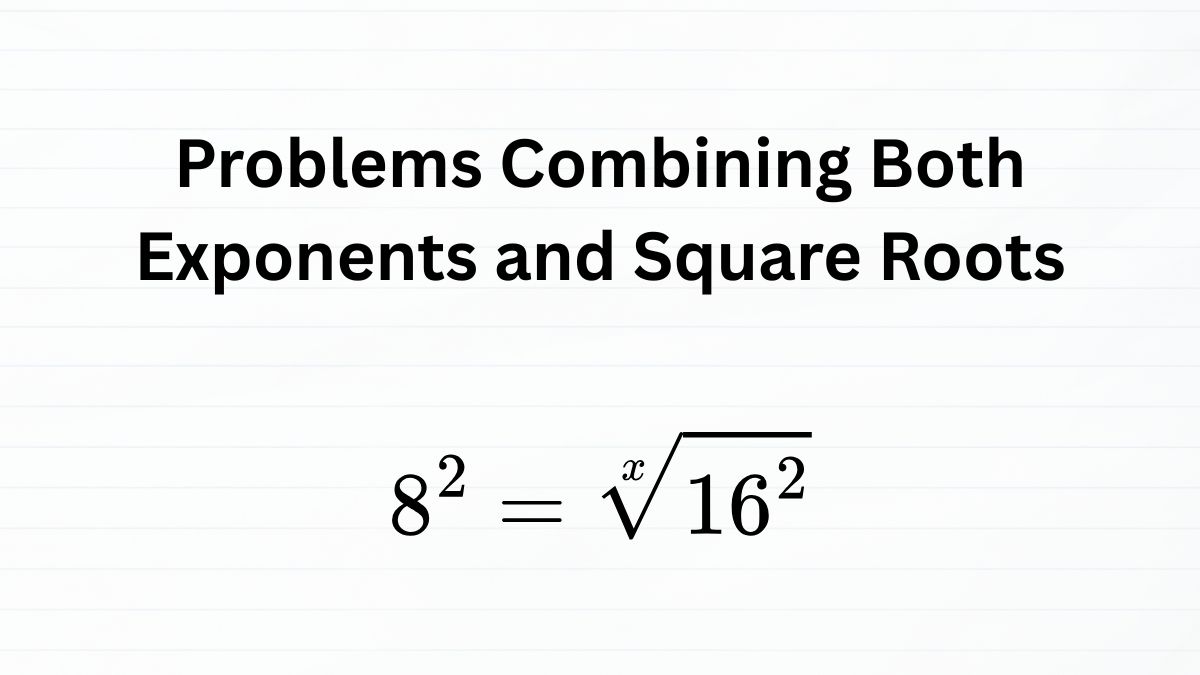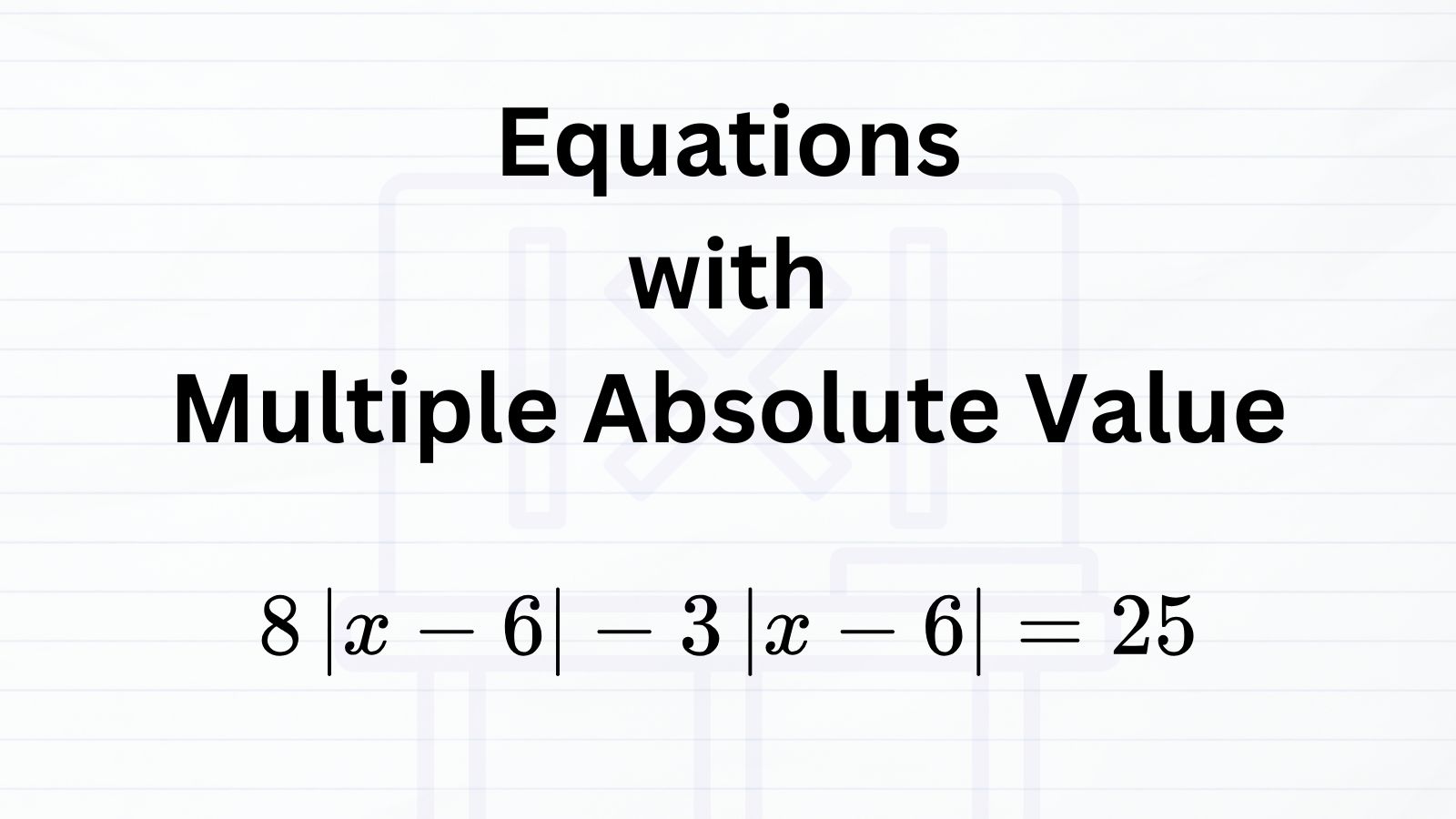
Special Right Triangles Appears on the SAT: Key Side Lengths to Remember
Table of Contents
On the SAT, you will often meet geometry problems where a right triangle is involved. Sometimes you need to find the lengths of the sides using a given angle. If two sides are already known, the Pythagorean theorem is enough.
But what happens if the problem gives you only one angle, such as \(\angle 60^{\circ}\) is given?
In that case, you need to rely on the side ratios of special right triangles. The good news is that the SAT only uses two types, so you don’t have to memorize a long list.
In this article, we’ll walk through these two special triangles step by step and see how knowing their ratios allows you to figure out actual side lengths.
Quick Summary
For the Digital SAT, there are two special right triangles you should remember:
- \(45^{\circ}-45^{\circ}-90^{\circ}\) angles (side ratio: \(1:1:\sqrt{2}\))
- \(30^{\circ}-60^{\circ}-90^{\circ}\) angles (side ratio: \(1:\sqrt{3}:2\))
For these triangles, knowing just one side is enough to find all the other side lengths.
Two Special Right Triangle
A right triangle is simply a triangle that contains one right angle (\(\angle 90^{\circ}\)).

On the SAT, there are two special right triangles you should know by heart:
- \(45^{\circ}-45^{\circ}-90^{\circ}\) angles (side ratio: \(1:1:\sqrt{2}\))
- \(30^{\circ}-60^{\circ}-90^{\circ}\) angles (side ratio: \(1:\sqrt{3}:2\))
What makes these triangles “special” is that their side ratios never change. Once you know the length of a single side, the other two can be determined immediately using those ratios.
Next, let’s look at how these ratios are applied in practice to calculate side lengths.
Triangles with 45°-45°-90° Angles
One of the special right triangles is the 45°–45°–90° triangle. When a problem shows that a right triangle has one angle of 45°, you can immediately recognize that it is this special triangle.
This triangle always has the following proportional side lengths:
Proportional Side Lengths of 45°-45°-90° Triangles

\(Leg:Leg:Hypotenuse=1:1:\sqrt{2}\)
Now, let’s apply this rule to solve the following question.
Explanation
Since a right triangle has one angle of 90°, knowing another angle determines all three. In this problem, one angle is 45°, so the triangle must be the special 45°-45°-90° triangle.
For this triangle, the side lengths follow the ratio:
\(Leg:Leg:Hypotenuse=1:1:\sqrt{2}\)
The question already defines the length of a leg as \(8\) unit. So, we’ll set up the following ratio.
\(Leg:Hypotenuse=1:\sqrt{2}\)
Substitute \(Leg = 8\) in the equation.
\(8: Hypototenuse = 1 : \sqrt{2}\)
\(Hypotenuse = 8 \sqrt{2}\)
Therefore, the hypotenuse of the given triangle is \(8 \sqrt{2}\).
Triangles with 30°-60°-90° Angles
The other special triangle has 30°-60°-90° angles. Just like the 45°–45°–90° triangle, this one also has fixed side ratios. No matter the actual size of the triangle, the side lengths always follow the same proportion:
Proportional Side Lengths of 30°-60°-90° Triangles

In a 30°-60°-90° triangle, the sides are named as the shorter leg, the longer leg, and the hypotenuse. Their relationship is given by:
\(Shorter \: leg:Longer \: leg:Hypotenuse=1:\sqrt{3}:2\)
Here, the “short leg” is the side opposite the 30° angle, the “long leg” is the side opposite the 60° angle, and the hypotenuse is always twice the short leg.
Here is a digital SAT question that tests this topic.
Explanation
From the problem, we know that the figure is a 30°–60°–90° special triangle. The sides are as follows:
- Side AB is the hypotenuse.
- Side BC is the shorter leg (opposite of 30° angle).
- Side AC is the longer leg (opposite of 60° angle).
The side lengths of a 30°–60°–90° triangle always follow the ratio:
\(Shorter \: leg:Longer \: leg:Hypotenuse=1:\sqrt{3}:2\)
In this problem, we need to find BC, the shorter leg. The ratio between the shorter leg and the longer leg is,
\(Shorter \: leg: Longer \: leg = 1:\sqrt{3}\)
Since the length of longer leg is given, we substitute: \(Longer \: leg = 12\).
\(Shorter \: leg:12=1: \sqrt{3}\)
\(Shorter \: leg = \frac{12}{\sqrt{3}}\)
On the SAT, unless instructed, you should always rationalize the fraction for the final answer.
To remove the square root from the denominator, multiply both the numerator and denominator by \(\sqrt{3}\).
\(\frac{12}{\sqrt{3}}\) => \(\frac{12 \times \sqrt{3}}{\sqrt{3} \times \sqrt{3}}\)
\(\frac{12 \sqrt{3}}{3}\)
We can further simplify the fraction.
\(\frac{12 \sqrt{3}}{3} = 4 \sqrt{3}\)
Therefore, for the given triangle, the length of the side BC (shorter leg) is \(4 \sqrt{3}\).
Applied Problems Using Special Triangles
So far, we have seen digital SAT questions involving basics of special triangles. There are also some applied or difficult problems regarding this topic. However, you must always bear in mind that digital SAT only tests these two special triangles. So, whenever you are given only one side length of a special triangle, think of which special triangle is referred to.
A Square Inscribed in a Circle
This is one of the common difficult questions you may encounter on the Digital SAT. It tests your understanding of the relationships between a circle, a square, and special right triangles.
To approach this kind of problem, you can break it down into clear steps:
Steps to Tackle a Square Inscribed in a Circle

Step1. Recognize that the diagonal of the square is also the diameter of the circle.
Step2. Split the square into two 45°–45°–90° special right triangles by drawing the diagonal.
Step3. Apply the side ratio rule for a 45°–45°–90° triangle to relate the side of the square to the circle’s diameter.
Let’s think about the following problem.
Explanation
If a problem states that “a square is inscribed in a circle,” this is a clear sign that the 45°-45°-90° special triangle rule will be useful. We are given that the radius of the square is \(6 \sqrt{2}\) inches.
When you draw a diagonal across the square, it divides the square into two 45°–45°–90° right triangles. Notice that this diagonal is also the diameter of the circle.
The diameter is \(6 \sqrt{2} \times = 12 \sqrt{2}\). This diagonal is the hypotenuse of the 45°–45°–90° triangle.
Proportional Side Lengths of 45°-45°-90° Triangles

\(Leg:Leg:Hypotenuse=1:1:\sqrt{2}\)
We can set up the ratio:
\(Leg: Hypotenuse = 1:\sqrt{2}\)
Substitute the given hypotenuse \(Hypotenuse = 12 \sqrt{2}\) and cross-multiply to solve for the leg:
\(Leg : 12 \sqrt{2} = 1 : \sqrt{2}\) => \(Leg \sqrt{2} = 12 \sqrt{2}\)
Divide both sides by \(\sqrt{2}\).
\(Leg = 12\)
Therefore, each side of the square is 12 inches.
A right Triangle in a Semi-Circle
Some questions ask you to work with a right triangle drawn inside a semicircle. In many of these problems, the triangle turns out to be a special 30°–60°–90° triangle.
Once you know the side ratio rule for this triangle, such questions become much easier to solve.
Explanation
First, let’s summarize the given information:
- RQ is the diameter of the semicircle and serves as the hypotenuse of the right triangle.
- Since one angle of the triangle is \(30^{\circ}\), the triangle is a 30°–60°–90° special triangle.
- PQ is the longer leg, and PR is the shorter leg.
The hypotenuse is given as 16. In a 30°–60°–90° triangle, the side ratios are,
\(Shorter \: leg:Longer \: leg:Hypotenuse=1:\sqrt{3}:2\)
We compare the shorter leg to the hypotenuse:
\(Shorter \: leg: Hypotenuse = 1:2\)
Substitute \(Hypotenuse = 16\) into the ratio.
\(Shorter \: leg: 16 = 1:2\)
\(Shorter \: leg = 8\)
Therefore, the length of side PR is 8.












